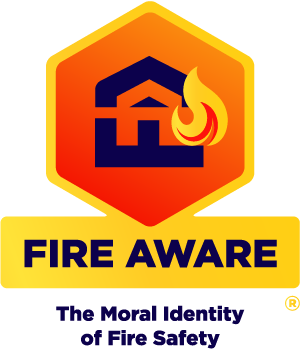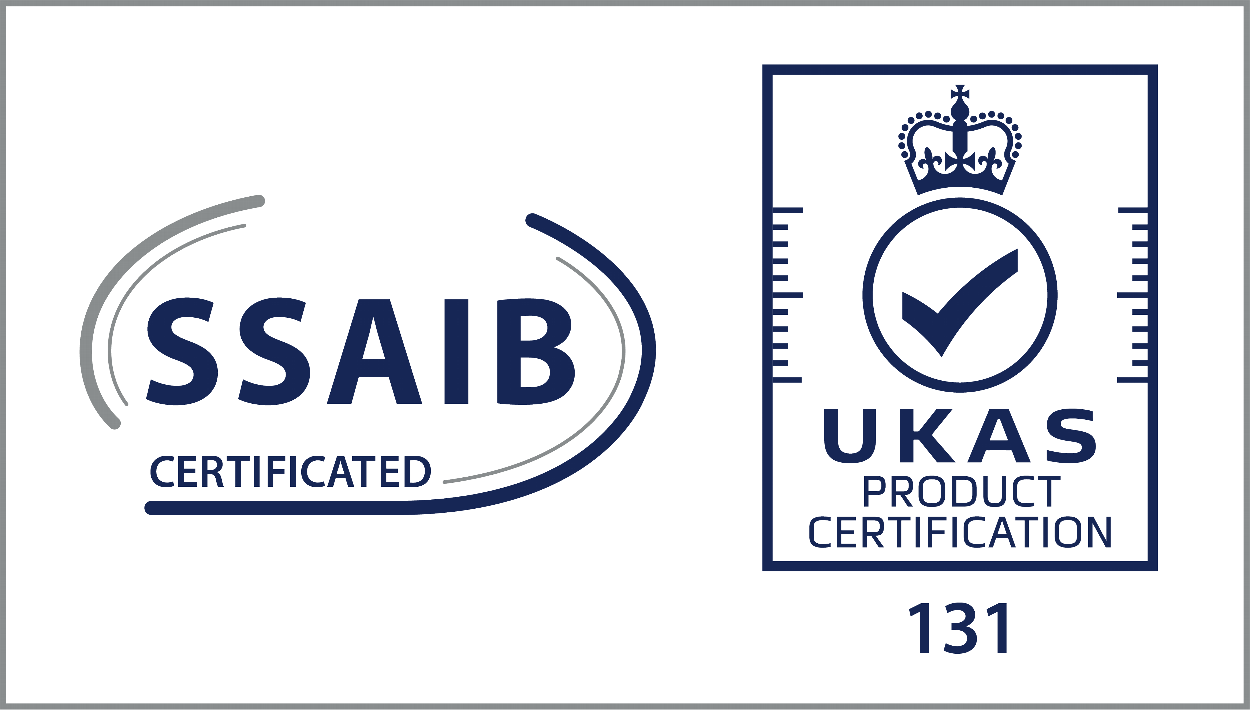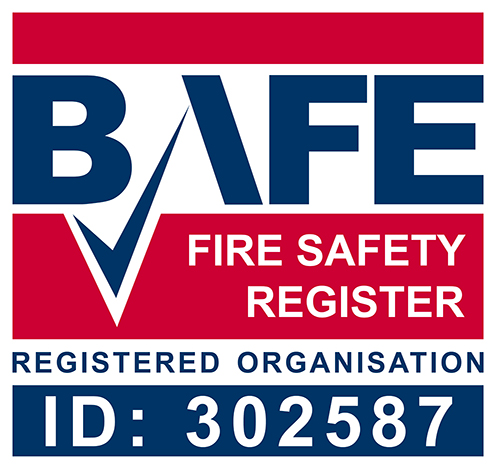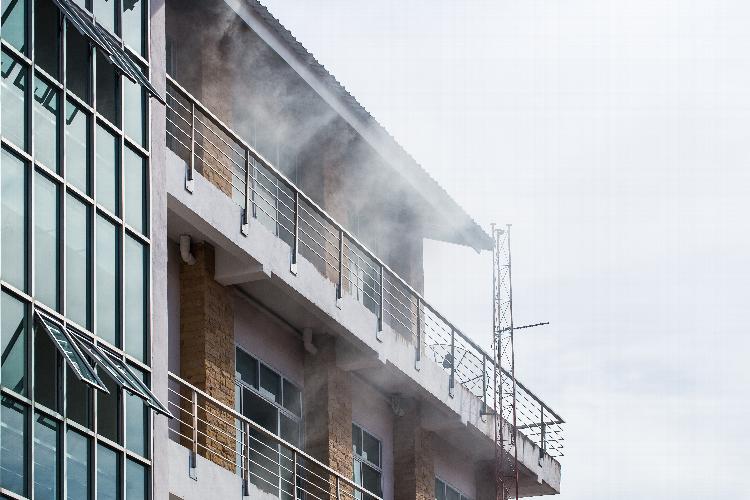As society opens up what As a Landlord do You need to focus on?...
What do you need to do to maintain a safe a legal rented home for your tenants? From fire safety best practice to Fire Risk Assessments, it's all here.
According to the National Fire Chiefs Council “Fire is among the most prominent risks to homeowners and occupiers – and its effects can be catastrophic and devastating. Every year, there are over 50,000 fires in dwellings in the UK. In recent years, health and safety regulations for property landlords have been dramatically stepped up to ensure everything possible is being done to protect tenants from the risk of fire.”
In this post we take a detailed look at what are the landlords responsibilities, where they start and end.
Property ownership and the role of the responsible person
Where fire safety is concerned, landlords have similar legal obligations to employers for ensuring the protection of those residing in and using the premises. However, legislation can vary depending on the type of tenancy.
Where any legislation discusses required activities of the ‘responsible person’, if you own or manage the property, that wording is referring to you – you are the responsible person. This means it’s your legal duty to comply with legislation and regulations to ensure the protection of all residents from the risk of fire.
It’s all in the detail
In mixed-use premises where unrelated occupiers live independently from one another but share common areas, landlords will need to comply with various regulations including
The Housing Act 2004, The Smoke and Carbon Monoxide Alarm (England) Regulations 2015,
and The Regulatory Reform (Fire Safety) Order 2005
The latter requires that all landlords must carry out a fire risk assessment on every property they rent out. This entails identifying possible dangers and risks, as well as particular people who may be at risk, and removing those risks and providing general fire precautions to deal with any possible risk left. Following completion of the fire risk assessment, findings should be recorded, actions taken, and the assessment should be reviewed regularly. It’s good practice to review it at least annually but should definitely be completed at each change of tenancy.
Main Causes of Fires in Rental Properties
The three main causes of fires in rental properties are from smoking, furniture and furnishings and electrical or gas faults.
Since the ‘No Smoking’ Act came into force in 2007, less and less people tend to smoke, and more and more private landlords stipulate that tenants must be ‘non-smokers’. It is of course difficult to monitor this, but a discernible landlord will be carrying out regular property inspections either personally or by an agent. It’s very difficult to hide the smell of smoke in a property and if the tenant is breaking the tenancy rules by smoking, landlords have the right to give them notice to leave. If smoking is permitted, landlords must provide sufficient smoke alarms in all areas where smoking is allowed.
Unfortunately, there are still many rogue landlords who don’t care whom they let their property too and fires caused by smoking are more likely to occur in these properties which are not subject to regular inspections.
The Furniture and Furnishings (Fire) (Safety) Regulations 1988 requires that all furniture and furnishings (excluding carpets, curtains and duvets) provided by a landlord must meet set levels of fire resistance.
Upholstered furniture includes sofas and armchairs; beds, headboards and mattresses; sofa beds and futons; nursery and children's furniture; loose and stretch covers for furniture; cushions and seat pads.
Gas Safety (Installations and Use) Regulations 1998 relates to use of gas appliances, fittings and flues in both domestic and commercial premises. It requires landlords to take on three main legal responsibilities – gas safety checks, a gas safety record and maintenance.
The aim of this regulation is to avoid gas explosions or gas leaks which can be very dangerous. Similarly, electrical equipment provided by the landlord (eg electric fires or cookers) should be certified that they are safe. This however does not apply to equipment belonging to the tenant such as TV’s computer equipment, electric radiators etc. However, most landlords who want to protect their rental property will have a clause in the tenancy agreement about issues such as overloaded sockets, for example. Again, any issues like this should be identified during a regular inspection.
Meanwhile, Electrical Equipment (Safety) Regulations 1994 requires landlords to certify and evidence that all electrical appliances and systems provided as part of the tenancy are safe.
In the event of fire in the home, a person is at least four times more likely to die if it is without a working smoke alarm.
It’s for this reason The Smoke and Carbon Monoxide Alarm (England) Regulations 2015
came into force and require private sector landlords to install at least one smoke alarm on every storey and a carbon monoxide alarm in any room containing a solid fuel burning appliance. The Landlord must also make sure the alarms are in working order at the start of each tenancy. In addition, all local authority Fire & Rescue Services strongly recommend an additional heat detector in the kitchen, and a smoke alarm in the lounge and hallway of individual flats and houses to give early warning to residents. These vital pieces of equipment aren’t optional.
The landlord is responsible for making sure all alarms are in working order at the start of every new tenancy. However, these rules vary between countries in the UK. While an occupant is in tenancy, it’s usually their responsibility to check – monthly – that the alarms remain in working order and change the batteries if needed. The landlord should make sure the tenant is aware of what’s required for the monthly test and a logbook should be filled in to record the dates (and results of each check).
The Housing Act 2004 and the housing health and safety rating system (HHSRS), which sits within it, requires landlords to ensure where possible that tenants aren’t at risk of accidents like electric shocks, fires, burns and scalds. That includes ensuring escapes routes are known and kept clear at all times and making sure there aren’t any fire hazards in areas of potential fire risk, including safe siting for cookers and electrical socket outlets.
Further fire safety considerations and responsibilities
Aside from the set-in-stone legislation (for which ignorance won’t be considered a reason for non-compliance), there are other things landlords can be mindful of.
For example,
- They should be confident that all outside doors can be easily opened at all times from the inside and all escape routes should be kept clear at all times.
- Make sure all flat front doors and doors on corridors and staircases must be ‘self-closing’ fire doors.
- Make sure ‘self-closing’ fire doors are fitted on all flats, corridors, and staircases.
- Check that doors don’t bang shut, to avoid them being wedged open.
- Regularly check door closing devices haven’t been tampered with or become defective.
Landlords who own or manage blocks of flats should also ensure residents and visitors are kept informed with appropriate signage placed around the building. In the event of a fire, residents should be clear on the location of the fire assembly point, directions towards fire exits and any other actions that should be taken.
Finally, for this post, two recent prosecutions of note can be found following Fire Safety Breaches in HMO type properties.
The safety of your tenants must be the foremost priority for landlords.
COUNCIL FINES LANDLORD £66,000 OVER 'SERIOUS' FIRE SAFETY BREACHES IN READING
(Original source The Fire Protection Association)
LEASEHOLDER ORDERED TO PAY £100,000 FINE FOR BREACHES OF FIRE SAFETY LAWS
(Original source Avon Fire & Rescue Service)
Do you need more information about fire protection products?
Get in touch with us at Wyvern Risk Management Ltd. where we can provide whole Fire Safety Solutions through our BAFE Fire Safety Register business associates at Fireshield Fire Protection for all your firefighting equipment needs and Tollgate Fire & Security for your alarms and emergency lighting.
If you’re a landlord and unsure about your fire safety responsibilities, please give a call 0800 593 0916, or you can find a good overview of your wider responsibilities as landlord on the gov.uk website.
Wyvern Risk Management
Providing Trusted Solutions – Creating Safer Places
©Wyvern Risk Management Limited 2023. All Rights Reserved.
Registered Company in England & Wales
Registration no 10368490
 Get In Touch - 0800 593 0916
Get In Touch - 0800 593 0916
FAQs
Testimonials
Our Company





